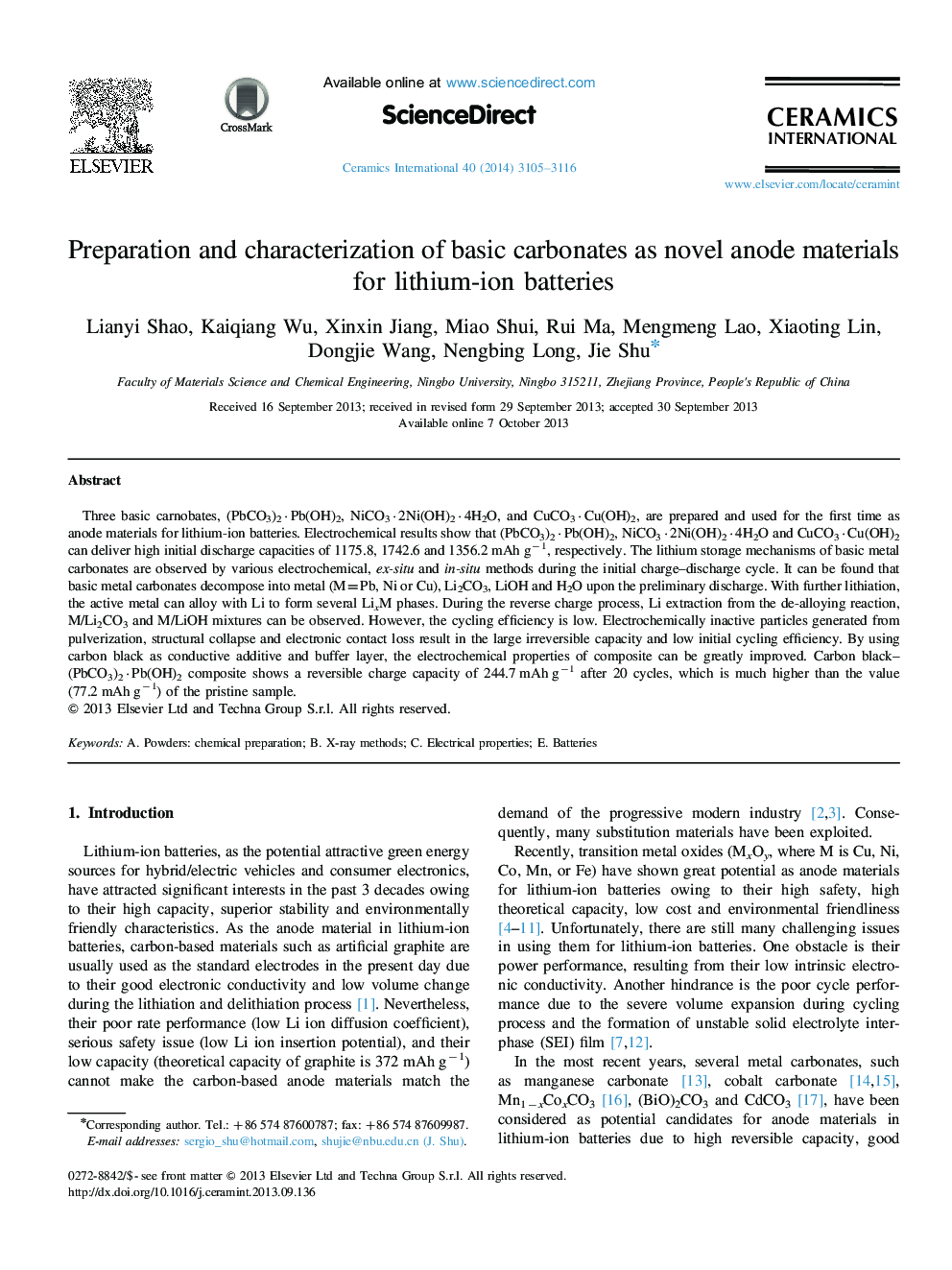| کد مقاله | کد نشریه | سال انتشار | مقاله انگلیسی | نسخه تمام متن |
|---|---|---|---|---|
| 1461362 | 989618 | 2014 | 12 صفحه PDF | دانلود رایگان |
Three basic carnobates, (PbCO3)2·Pb(OH)2, NiCO3·2Ni(OH)2·4H2O, and CuCO3·Cu(OH)2, are prepared and used for the first time as anode materials for lithium-ion batteries. Electrochemical results show that (PbCO3)2·Pb(OH)2, NiCO3·2Ni(OH)2·4H2O and CuCO3·Cu(OH)2 can deliver high initial discharge capacities of 1175.8, 1742.6 and 1356.2 mAh g−1, respectively. The lithium storage mechanisms of basic metal carbonates are observed by various electrochemical, ex-situ and in-situ methods during the initial charge–discharge cycle. It can be found that basic metal carbonates decompose into metal (M=Pb, Ni or Cu), Li2CO3, LiOH and H2O upon the preliminary discharge. With further lithiation, the active metal can alloy with Li to form several LixM phases. During the reverse charge process, Li extraction from the de-alloying reaction, M/Li2CO3 and M/LiOH mixtures can be observed. However, the cycling efficiency is low. Electrochemically inactive particles generated from pulverization, structural collapse and electronic contact loss result in the large irreversible capacity and low initial cycling efficiency. By using carbon black as conductive additive and buffer layer, the electrochemical properties of composite can be greatly improved. Carbon black–(PbCO3)2·Pb(OH)2 composite shows a reversible charge capacity of 244.7 mAh g−1 after 20 cycles, which is much higher than the value (77.2 mAh g−1) of the pristine sample.
Journal: Ceramics International - Volume 40, Issue 2, March 2014, Pages 3105–3116
